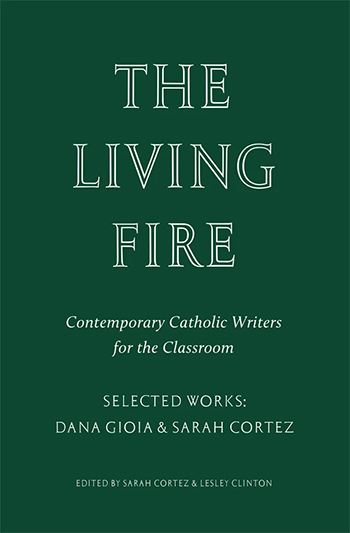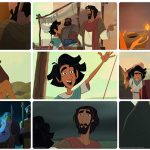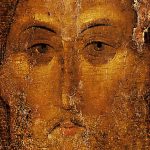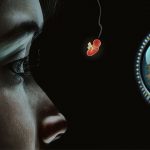
Poetry is a human exercise and throughout human history has been one method people have used to connect to others and to God. Though readership of poetry in the United States has grown in recent years, in part due to young people reading and listening to more poetry on social media, overall readership continues to hover around the ten percent mark.
For this reason, though students seem to be showing an increased interest in poetry, adults who were not the recipients of a robust education in poetry may find it difficult to help students connect with poetry and poets. Enter The Living Fire: Contemporary Catholic Writers for the Classroom.
The Living Fire, a new series from Wiseblood Books, promises to connect high school students to contemporary Catholic poets. The first installment considers the poetry of Dana Gioia and Sarah Cortez. Gioia, former chair of the National Endowment for the Arts, is generally considered one of the foremost Catholic poets and critics of his generation. Cortez, the founder and president of Catholic Literary Arts, brings to the page her experience as a beat officer with the Houston Police Department.
For both poets, the collection focuses on poems and themes that are relatable and accessible for the high school student: the shape of unconditional love; death and salvation; God’s role in our lives; courage; memory.
Beyond the joy of encountering these poems, the great strength of The Living Fire is its carefully crafted lesson plans. As a homeschooler myself, I often exposed my children to poetry, but did not have the background to bring a depth of understanding that The Living Fire offers. For any teacher who wants to do more with their poetry lessons, the deep readings, conversation questions, and project ideas included in The Living Fire will be a helpful resource.
Some literature textbooks focus primarily on the “how” of poetry: “What is a sonnet? How do you scan poetic meter? What makes a haiku? Is it a simile or a metaphor?” The Living Fire, on the other hand, doesn’t just deal with the principles of literary terms and poetic elements, though it covers a rich and varied assortment of these. Instead, it uses poetry as a springboard for encouraging students to ponder Big Questions in light of their own experiences. “Discussion Question” topics range from how to appreciate the wisdom inherited from our ancestors to finding God in Creation to the purpose of art.
One lesson, for example, explores suffering and conflict, but does not stop at platitudes. Rather, it uses Cortez’s poem “On Some Streets” to challenge students to recognize and empathize with those who are suffering. In considering Gioia’s “Finding a Box of Family Letters,” students are asked both to connect to their own pasts and to reconsider the meaning of that cry of youth through the ages: “seize the day.”
The Living Fire meets high schoolers where they are—trying to understand the world around them—and offers a glimpse of how poetry, and art more broadly, can speak to these questions. Creative writing prompts give students the opportunity to join in the conversation with their own words and rhythms.
Gioia argues in his essay “Poetry as Enchantment” that teachers have “touched the fire of imagination, art, and language,” and that it is therefore their responsibility “to pass that fire on to the future.”
This is what The Living Fire promises: a curated selection of poems and an educational scaffolding for exploring contemporary Catholic poetry and the way poetry can set one’s faith life ablaze. While it will be most useful to teachers and homeschoolers, it should also prove a helpful resource for anyone looking to read contemporary poetry with more depth and understanding.
The Living Fire: Contemporary Catholic Writers for the Classroom: Series
Selected Works: Dana Gioia & Sarah Cortez
Edited by Sarah Cortez and Lesley Clinton
Wiseblood Books, 2024
Paperback, three volumes, 270 pages
If you value the news and views Catholic World Report provides, please consider donating to support our efforts. Your contribution will help us continue to make CWR available to all readers worldwide for free, without a subscription. Thank you for your generosity!
Click here for more information on donating to CWR. Click here to sign up for our newsletter.













